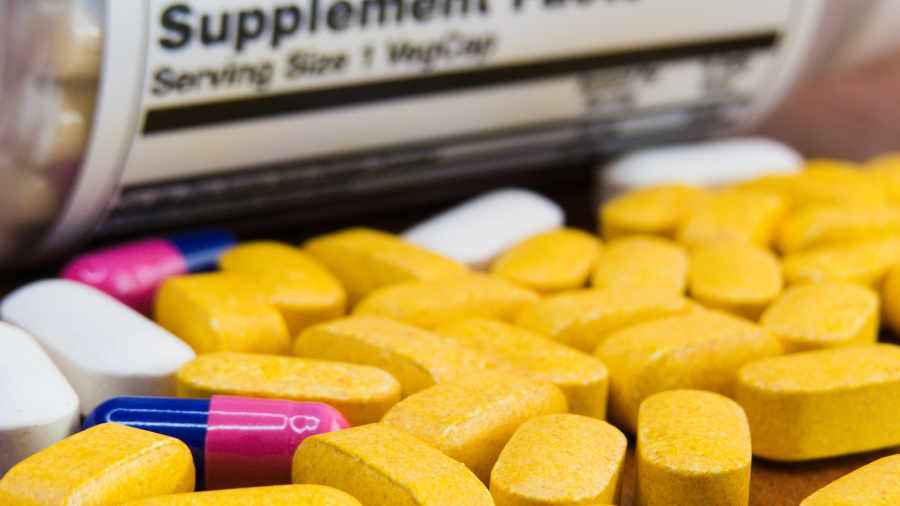Supplement labels can be confusing, crowded with numbers, scientific names, and marketing claims that may not always tell the full story.
Understanding how to read a supplement label is key to choosing safe and effective products while avoiding unnecessary additives or misleading formulations.
Some supplements also contain underdosed ingredients, excessive fillers, or unverified claims that make them less effective or even risky.
By knowing what to look for—and what to avoid—consumers can make smarter, well-informed decisions about the supplements they take.
Key Sections of a Supplement Label
A supplement label provides essential information about ingredient composition, dosage, and quality. However, understanding each section is crucial to determining whether a product is worth taking.
Supplement Facts Panel
This section is similar to a nutrition label on food products. It lists:
- Serving size – How much of the product you should take per dose.
- Amount per serving – The quantity of each ingredient in the supplement.
- % Daily Value (%DV) – How much the ingredient contributes to daily nutritional needs based on standard guidelines.
Pay attention to whether an ingredient is significantly over or under the %DV, as both excessive and insufficient amounts can impact effectiveness.
Active Ingredients and Dosages
This section lists vitamins, minerals, and other functional compounds included in the supplement. Checking dosages against clinically supported amounts can help determine whether the supplement is effective or just underdosed marketing hype.
For instance:
- A vitamin D supplement should ideally contain 600–800 IU per day to support bone health.
- Omega-3 supplements should provide at least 250–500 mg of EPA/DHA per day for general benefits.
If an ingredient is present in very small amounts, it may be included more for marketing than for actual effectiveness.
Other Ingredients (Excipients and Additives)
Beyond active ingredients, supplements often contain excipients—inactive ingredients used as fillers, preservatives, or stabilizers. While some are harmless, others may be unnecessary or even problematic.
Common additives to watch for:
- Artificial colors and dyes – Some have been linked to allergic reactions or sensitivities.
- Titanium dioxide – Used for whitening but has raised safety concerns.
- Hydrogenated oils – May negatively affect heart health.
Proprietary Blends and Hidden Formulations
Some supplements use proprietary blends, grouping multiple ingredients under one name without specifying individual amounts. This makes it impossible to know how much of each ingredient you’re actually getting.
For example:
- A supplement may list a “Super Antioxidant Blend” (1,500 mg) but not disclose how much of each ingredient—making it unclear whether key ingredients are present in meaningful amounts.
If a supplement relies on proprietary blends without transparent dosages, it may not be as effective as advertised.
Third-Party Certifications and Quality Seals

Reputable supplements often display quality seals from independent testing organizations, verifying that they meet safety and purity standards. Look for certifications from:
- USP (United States Pharmacopeia) – Ensures potency and ingredient accuracy.
- NSF International – Screens for contaminants and verifies label claims.
- ConsumerLab – Independently tests for ingredient quality and safety.
A supplement without any third-party verification may have inconsistencies in quality or undisclosed contaminants.
How to Spot Red Flags on Supplement Labels
Not all supplements are created with transparency and quality in mind. Some labels use misleading claims, unnecessary additives, or hidden ingredient amounts to make a product seem more effective than it actually is. Here’s what to watch out for when evaluating a supplement label.
Overpromising Marketing Claims
Supplements are not FDA-approved to cure or treat diseases, but some brands use exaggerated claims to attract buyers. Be cautious of phrases like:
- “Clinically proven to cure [condition]” – No supplement can legally claim to cure or treat a disease.
- “Doctor recommended” – This phrase means little unless supported by specific research or endorsements.
- “Instant results” – Most supplements take weeks or months to show measurable effects.
Excessive or Mega-Dosed Ingredients
More isn’t always better. Some supplements overload vitamins and minerals to create the illusion of a more potent formula, but excess amounts can have unintended consequences.
For example:
- Too much vitamin A can lead to toxicity, causing dizziness, nausea, and liver issues.
- Excessive iron intake can be harmful, particularly for individuals who don’t need additional supplementation.
Stick to products that provide clinically supported dosages rather than unnecessarily high amounts.
Artificial Fillers, Colors, and Preservatives
Some supplements include unnecessary additives that offer no health benefits and may even be harmful over time. Common ones to avoid include:
- Titanium dioxide – Used as a whitening agent but has raised safety concerns.
- Artificial dyes (Red 40, Yellow 5, Blue 1) – Linked to allergic reactions and potential long-term effects.
- Hydrogenated oils – Sometimes used as cheap fillers but can negatively impact heart health.
A clean, high-quality supplement should contain only what’s necessary to deliver its intended benefits.
Lack of Transparency in Sourcing and Testing
If a supplement label does not specify third-party testing, ingredient sources, or quality control processes, it may indicate lower manufacturing standards. Look for:
- Country of origin – Some regions have weaker safety regulations, increasing the risk of contamination.
- Third-party testing results – Products with USP, NSF, or ConsumerLab certification are more likely to be free from contaminants.
- Full ingredient disclosure – If a brand avoids listing individual ingredient amounts, it may be masking an underdosed or ineffective formula.
Spotting these red flags helps consumers avoid misleading products and choose supplements with real health benefits.
How to Choose a High-Quality Supplement

With so many options on the market, selecting a supplement that is both safe and effective requires careful label examination. Here are the key factors to look for when choosing a high-quality product.
Look for Third-Party Testing Seals
Reputable supplements display certification seals from independent testing organizations that verify quality, potency, and safety. Some of the most trusted certifications include:
- USP (United States Pharmacopeia) – Ensures the supplement contains what it claims, in the correct amounts, without harmful contaminants.
- NSF International – Screens for contaminants and verifies good manufacturing practices.
- ConsumerLab – Independently tests supplements for label accuracy and purity.
If a supplement does not mention third-party testing, it may not have undergone proper quality checks.
Check for Clinically Supported Dosages
Many brands include ingredients at ineffective doses just to list them on the label. Before purchasing, research whether the ingredient amounts match those used in scientific studies.
For example:
- Magnesium for muscle and nerve function – Minimum 200–400 mg per serving.
- Omega-3 (EPA/DHA) for heart health – At least 250–500 mg per day.
- Vitamin D for bone health – Around 600–800 IU per day.
If a product lists an ingredient but doesn’t provide the effective dose, it may not deliver the promised benefits.
Avoid Unnecessary Additives and Fillers
A clean supplement should contain only the ingredients necessary to deliver its benefits. Avoid:
- Artificial colors and dyes – These add no nutritional value and may trigger sensitivities.
- Excessive binders and fillers – Some supplements use cheap fillers that serve no purpose other than adding bulk.
- High doses of preservatives – While some preservation is necessary, an overload of artificial stabilizers may indicate poor-quality sourcing.
Choose Transparent Brands
Reputable supplement brands clearly disclose:
- Ingredient sources – Whether ingredients are natural, synthetic, or sourced from high-quality locations.
- Manufacturing standards – GMP (Good Manufacturing Practices) compliance ensures proper production controls.
- Expiration dates and storage information – Proper storage instructions help maintain potency.
By selecting supplements that are backed by science, tested for purity, and free from unnecessary additives, consumers can make better choices for their health.
Final Thoughts
Understanding how to read a supplement facts label is essential for making informed, safe, and effective choices. While flashy marketing and bold health claims may grab attention, the real value lies in the ingredients, dosages, and quality standards printed on the label.
By focusing on third-party testing, clinically supported dosages, and transparent formulations, consumers can avoid misleading products and choose supplements that genuinely support their health goals. Taking the time to read and interpret labels ensures that people are not just buying into hype but investing in a high-quality, research-backed product.
Sources:
- “Dietary Supplement Labeling Guide” – https://www.fda.gov/food/dietary-supplements/dietary-supplement-labeling-guide
- “How to Read a Supplement Facts Label” – https://ods.od.nih.gov/HealthInformation/DSLabel.aspx
- “Third-Party Certification in Dietary Supplements” – https://www.usp.org/dietary-supplements/usp-verified-mark
- “ConsumerLab Guide to Choosing Safe Supplements” – https://www.consumerlab.com/news/choosing-safe-supplements/06-30-2022/
- “Understanding Supplement Labels and Regulations” – https://www.nsfsport.com/certification/gmp
- “Proprietary Blends and Hidden Formulations in Supplements” – https://www.ncbi.nlm.nih.gov/pmc/articles/PMC6366696/
- “FDA Guidelines on Health Claims in Supplements” – https://www.fda.gov/food/food-labeling-nutrition/structurefunction-claims
- “Toxic Additives and Fillers in Supplements: What to Avoid” – https://www.ncbi.nlm.nih.gov/pmc/articles/PMC5125701/
- “Good Manufacturing Practices (GMP) for Supplements” – https://www.who.int/publications/i/item/good-manufacturing-practices-for-pharmaceutical-products
- “Are High-Dose Supplements Safe?” – https://www.sciencedirect.com/science/article/pii/S0899900720300938




